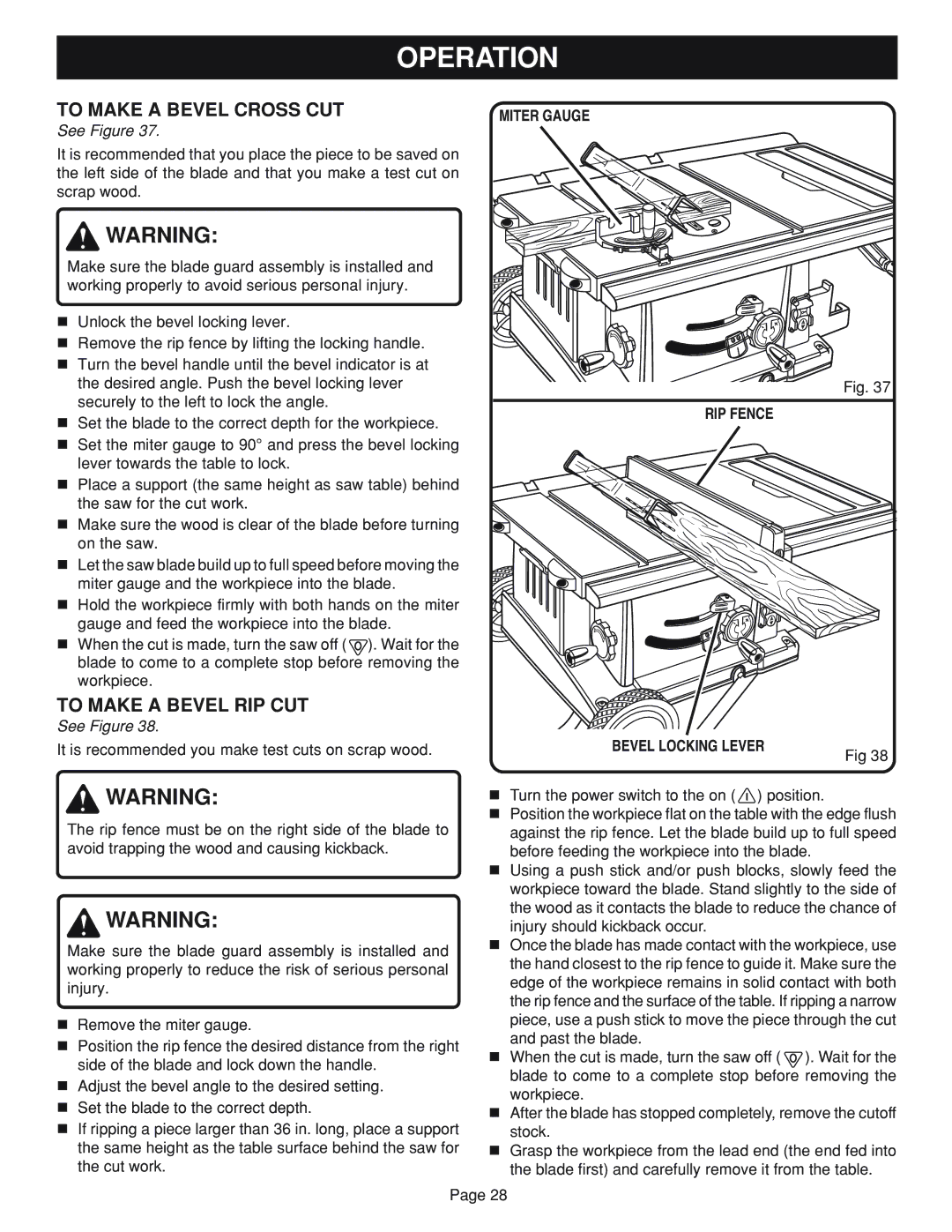BTS20 specifications
The Ryobi BTS20 is a versatile and efficient table saw that caters to both DIY enthusiasts and professional woodworkers alike. Designed with precision and user-friendliness in mind, the BTS20 is a reliable addition to any workshop, delivering impressive cutting performance and functionality.One of the standout features of the Ryobi BTS20 is its powerful 15-amp motor, which provides ample power to tackle a variety of cutting tasks. The motor is capable of delivering a no-load speed of up to 5,000 RPM, ensuring that users can make clean and accurate cuts through different materials, including hardwoods and plywood. This makes the BTS20 suitable for a wide range of applications, from small home projects to larger, more complex woodworking endeavors.
The table saw boasts a spacious 27-inch by 18-inch table surface, providing ample workspace for larger workpieces and ensuring stability during operations. The tabletop is made from high-quality materials to enhance durability and promote smooth feeding of materials. Furthermore, the BTS20 features an adjustable fence system, which allows for quick and precise adjustments, ensuring accurate cuts every time.
Safety is a fundamental consideration in the design of the Ryobi BTS20. The saw is equipped with a blade guard that helps protect users from accidental contact with the blade during operation. Additionally, the saw includes an electric brake that stops the blade quickly, minimizing the risk of injury. With built-in kickback protection, the BTS20 also helps to keep the user safe from unforeseen accidents during cutting tasks.
Another noteworthy characteristic of the Ryobi BTS20 is its portability. The saw includes foldable legs that make it easy to set up and take down, allowing users to transport it between job sites with ease. The lightweight design contributes to its portability while ensuring that it remains stable during operation.
In terms of technology, the Ryobi BTS20 features a well-engineered dust collection system that helps maintain a clean workspace. This system is designed to minimize the amount of sawdust and debris produced during cutting, contributing not only to cleanliness but also to better visibility of the work area.
In conclusion, the Ryobi BTS20 is a power-packed table saw that combines performance, safety, and portability. With its robust motor, spacious work surface, and user-friendly features, it stands as an impressive option for anyone serious about woodworking. Whether you're crafting a new piece of furniture or tackling home renovations, the Ryobi BTS20 will not disappoint.

